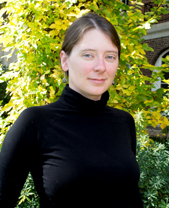-
Membership
Membership
Anyone with an interest in the history of the built environment is welcome to join the Society of Architectural Historians -
Conferences
Conferences
SAH Annual International Conferences bring members together for scholarly exchange and networking -
Publications
Publications
Through print and digital publications, SAH documents the history of the built environment and disseminates scholarshipLatest Issue:

-
Programs
Programs
SAH promotes meaningful engagement with the history of the built environment through its programsMember Programs
-
Jobs & Opportunities
Jobs & Opportunities
SAH provides resources, fellowships, and grants to help further your career and professional life -
Support
Support
We invite you to support the educational mission of SAH by making a gift, becoming a member, or volunteering -
About
About
SAH promotes the study, interpretation, and conservation of the built environment worldwide for the benefit of all
Study Tour: Three Capitals: New Delhi, Chandigarh & Dhaka - Day 1
I arrived in Dhaka in the early evening welcomed by hearty mosquitoes and a beautifully foggy purple and orange sky. On the short (distance-wise) ride from the airport to the hotel, I immediately had a sense of the density that composed the city. Dhaka’s population, stated officially to be around 15 million people within 618 square miles (that is roughly 24,272 people per square mile), is nearly unfathomable, and the traffic that is an inevitable result was a succinct introduction to the city. Superficially, the street seemed like madness, chaos, a planner’s nightmare. But, as we inched along beside every imaginable mode of transport, I realized: I was experiencing a sort of order that was entirely unfamiliar. Vehicles were within centimeters of one another, and yet drivers and pedestrians seemed to trust one another that nothing would touch. There were no scrapes or dents near us (though I am sure that can’t be too uncommon of a circumstance in such traffic), and I witnessed no road-rage. Perhaps this sort of traffic is so common, it isn’t worth the energy expended to yell or slam fists on the steering wheel.
We arrived at the hotel a few hours later, missing the welcome dinner. Introductions among the group would have to wait until tomorrow. But, to quickly introduce myself here, I am a second-year Ph.D. student in Art History at the Pennsylvania State University. With the generous award of the Scott Opler Travel Fellowship by the SAH, I was able to join this incredible tour to Bangladesh and India organized and masterfully led by Adnan Morshed (Associate Professor, School of Architecture and Planning at The Catholic University of America, Washington, DC) and Anubha Kakroo (Architect and Design Consultant, New Delhi). My research interests have focused on issues surrounding eclecticism in architecture, from commercial buildings in nineteenth-century America to imperial palaces of eighteenth- and nineteenth-century South Asia. Most intriguing about this research has been exploring the cultural exchanges demonstrated in such design choices, and it was this factor that prompted my interest in this particular study tour. The designs of the three capitals — Dhaka, New Delhi, and Chandigarh — all point to often delicate and contentious issues evident in the intersections of culture. Though I have had the fortune to study these cities as a part of my graduate education, little will compare to actually visiting them, walking the streets and boulevards, and standing inside these iconic buildings.
 Gretta Tritch Roman, Ph.D. Candidate, Penn State University
Gretta Tritch Roman, Ph.D. Candidate, Penn State University Gretta Tritch Roman is a Ph.D. candidate in art and architectural history at the Pennsylvania State University. She earned a Bachelor of Architecture at the University of Arkansas and her Master’s degree in art and architectural history at the Pennsylvania State University where she completed a thesis titled, “La mise en scène icarienne: The Construal of Utopian Space in Nauvoo, Illinois, 1849-58.” Recently her research has focused on strategies of eclectic designs and the ways in which varying audiences respond to such buildings, opening discussions that have ranged from Lucknow, India, to Chicago, Illinois. Currently she is working on her dissertation under the working title, “Rivalry, Revivalism, and Ritual: Building the Grain Exchanges of the American Midwest, 1875-1930.”


Leave a commentOrder by
Newest on top Oldest on top